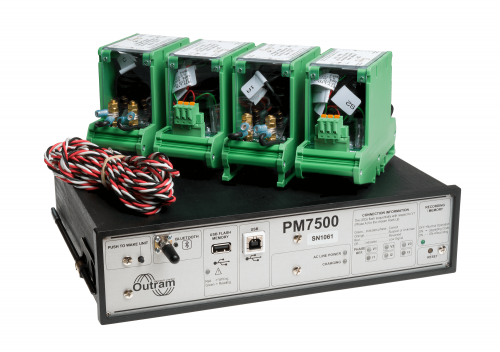
The Challenge: Stabilising the Low-Inertia Electricity Network
As the UK continues its transition towards net zero emissions, the increased adoption of decarbonisation and low-carbon technologies has led to a marked reduction in the stability of the electricity system.
Transmission and Distribution Network Operators are grappling with lower inertia and larger losses. To stabilise the system when it deviates from the ideal 50Hz frequency more rapidly, National Grid ESO has launched Dynamic Containment, a frequency response scheme designed to operate post-fault to re-stabilise the grid.
What is National Grid’s Dynamic Frequency Response Service?
The National Grid Dynamic Containment is a frequency response solution designed to re-stabilise the system once it moves away from the 50Hz ideal frequency when an event occurs.
This service involves deploying external companies to provide a faster-acting frequency response after a deviation in frequency, meeting the National Grid’s immediate need for rapid stabilisation.
What are the Dynamic Containment Frequency Measurement Requirements?
Companies participating in the Dynamic Containment scheme must meet two key requirements.
First, they must demonstrate that their system can react quickly enough to stabilise the frequency immediately after a fault.
Second, they must provide continuous hourly data files to National Grid, proving that their system is ready and alert to respond when needed.
Meet Dynamic Containment With High-Speed Frequency Analysers
Outram’s Portable PM7000DF and panel-mounted PM7500DF power quality analysers are designed to fulfil the frequency validation requirements for Dynamic Containment by featuring independent (dual) frequency variation measurements on V4, offering unparalleled speed and accuracy.
Fast and Accurate Frequency Variation Measurements
With a resolution of 0.001Hz, Outram’s PM7500 and PM7000 power quality analysers can measure frequency with exceptional precision.
Additionally, the typical noise level is less than 0.001 Hz RMS, ensuring reliable and consistent measurements.
Seamless Data Integration for National Grid Reporting
Not only can Outram provide the necessary measurement equipment to verify a Dynamic Containment Provider’s reaction capabilities, our power monitoring analysers can also provide ongoing, time-synchronised, gapless data packets over TCP-IP, containing frequency and power information. This data is required hourly by National Grid to ensure the provider can respond as agreed.
Outram’s Commitment to Solving Complex Measurement Challenges
John Outram, Managing Director of Outram, explained, “This latest development from Outram was in response to multiple customers requesting this high-speed frequency measurement in a format that could be re-packaged easily with their battery capacity data and sent straight to National Grid. With nothing else suitable on the market enabling this 20Hz update, we saw an opportunity to help increase revenue for battery owners while assisting National Grid ESO in their targets for reducing the costs of balancing the network.”
Outram’s expertise in solving complex measurement requirements, such as Fault Level (short circuit current) and Harmonics to the 100th as per ENA EREC G5/5 recommendations, positions the company as a valuable partner in addressing the challenges introduced by the increasing adoption of renewable inverter technology.
Outram’s independent, high-speed, dual-frequency measurement analysers can be purchased directly from our Head Office in West Sussex, England, where the units are manufactured.
Additionally, existing units on the market can be upgraded retrospectively to include this capability and the facility necessary to download the hourly, seamless data packets required for the Dynamic Containment National Grid response.
For more information on Outram’s power quality analysers and our applications in meeting the Dynamic Containment frequency measurement requirements, please get in touch with us.
